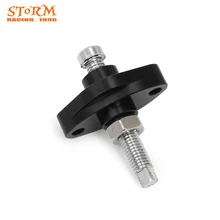Yamaha Fj1200 86 Manual
The Yamaha FJ1100 and FJ1200 manual by Clymer is the best reference book for repair and service information for your Yamaha. Every Clymer motorcycle service manual is written for the do-it-yourselfer as well as the experienced mechanic. Clymer motorcycle repair manuals are the cheapest way to keep your motorcycle running properly. Every Clymer motorcycle service manual contains hundreds of original photographs and illustrations obtained from the complete disassembly and assembly of the motorcycle covered. This, in addition to extensive research, is how Clymer repair manuals achieve an unmatched level of detail, accuracy and clarity to guide the reader through each service, troubleshooting and repair procedure.

Contents. FJ1100 Yamaha released the FJ1100 for model years 1984 and 1985. This class is characterised by retaining sportiness while integrating more street-friendly riding characteristics, including good manoeuvrability as well as long distance comfort, such as a more upright seating configuration designed to reduce back strain and a large fairing to reduce fatigue from wind resistance. Emphasis is placed on a balance of utility and sport, rather than pure performance orientation.
The machine was noticeably narrower than many contemporaries, Yamaha achieved this by placing the behind the cylinders instead of the more normal position on the end of the. 1984 FJ1100 with custom made seat FJ1200 In 1986 Yamaha decided to upgrade the FJ1100 by increasing the engine displacement slightly and adding upgraded suspension and other components. The result was the FJ1200. The peak power output was raised slightly to 130 bhp (97 kW) from the FJ1100s 125 bhp (93 kW)the FJ1200 had more low- to mid-range torque.
1987 Yamaha Fj1200
The FJ1200 was produced in three main successive versions (1TX, 3CV and 3XW) each updated version benefiting from improvements to bodywork, front and rear suspension components, and the addition of an optional -equipped version (FJ1200A) from 1991 until 1996, when Yamaha discontinued the FJ1200 in the United Kingdom. The model was discontinued in the United States in 1993. Market competitors during its production years included the, Suzuki's 1100 and Kawasaki's Ninja ZX-10. Engine The FJ1200 uses a four in-line layout and is air-cooled. Sixteen valves are operated by a chain-driven; valve clearances are adjusted using shims.
The four constant-velocity are mounted in a bank behind the cylinders and feed each cylinder through short intake. Four exhaust downpipes join a box below the engine where the gases are split to exit through two silencers (mufflers). The crankshaft is geared directly to the, no is used.
All of our manuals are new and are published and printed by John Deere. Gator ts for sale.
Starting is by electric starter only. Lubrication is wet sump using a pump; an oil radiator assists with cooling. Both the FJ1100 and FJ1200 were fitted with an additional fuel vapour recovery system to comply with emission regulations.

1990 FJ1200 Model 3CV with standard windscreen Transmission The FJ1200 uses a five-speed sequential constant-mesh. The clutch is of the wet, multiple-disc diaphragm spring type and is hydraulically operated. Final drive is by and. Chassis The of the FJ1200 is manufactured from box-section and uses a perimeter layout, the fairing and upper rear section use separate cylindrical tubing sub-frames. The rear is placed vertically behind the engine and connects to a made from (note: later 3XW models have mild steel swinging arm) via several forged aluminium rocker arms. The 17-inch front wheel is held between 41 mm spring and oil damped.
The FJ1100 and early FJ1200 models featured adjustable anti-dive units and a smaller diameter 16-inch wheel. The FJ1100 and early FJ1200 used twin ventilated for the front wheel with a single ventilated disc at the rear. FJ1200 models, 3CV & 3XW, used solid front discs but retained the rear ventilated disc, front brake calipers were upgraded to a four-piston design.
An was used on the FJ1200A. A full fairing protects the rider, varying height fixed windscreens were available as options. FJ1200 with ABS brakes Electrical system The FJ1200 features a standard 12 electrical system. The alternator and starter motor are mounted behind the cylinders. Is used in conjunction with two. Yamaha's self-cancelling indicator unit is used and a variable resistance is used to monitor engine oil contents with associated warning lights. A large fuel gauge is provided as is a low fuel level warning light.
A digital clock is also fitted. A safety feature of the FJ1200 is that the engine ignition is cut if first gear is selected with the sidestand down, this is now commonplace on modern motorcycles.